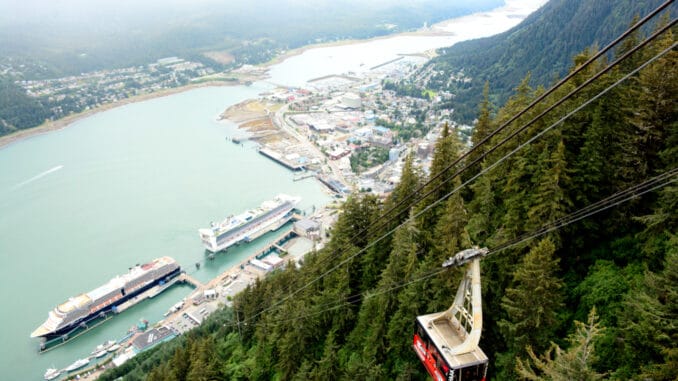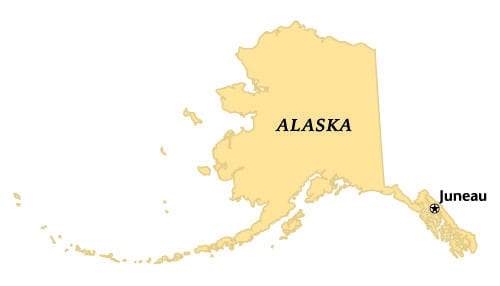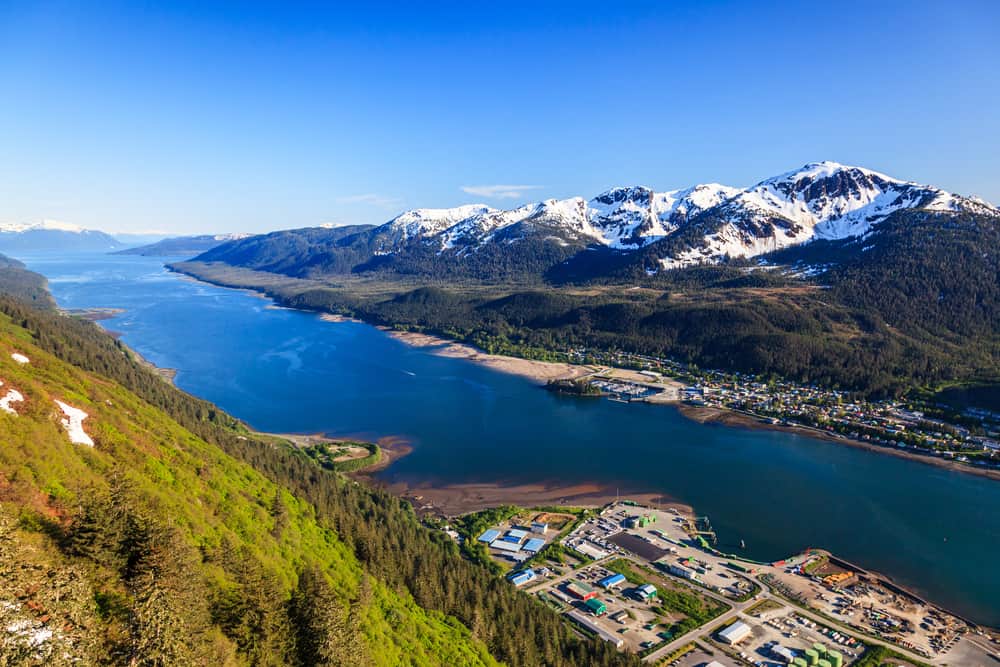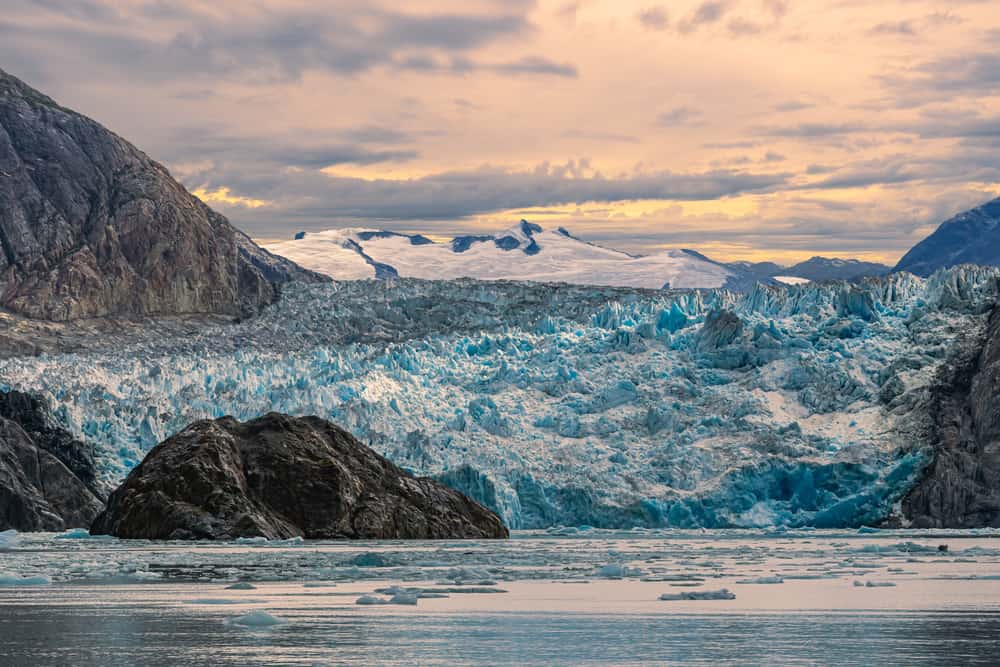
Juneau is the capital of Alaska and the third most populous city in the wide wilderness of the Last Frontier. Located in the Alaskan panhandle – more specifically in the Gastineau Channel – at the foot of Mount Juneau, this Alaskan city was named the state’s capital in 1906.
The rest of this article will explore the history of this unique Alaskan city and how it came to be named as the capital of Alaska.
Where Is the Capital Of Alaska Located?

Juneau is located on Alaska’s panhandle in the Gastineau strait instead of on mainland Alaska. The northern part of the city lies at the foot of Mt. Juneau with downtown Juneau lying at sea level. Because of the extreme terrain surrounding the city, transportation by land is impossible, making Juneau an island city accessible only by plane and boat.
Juneau is the least most populated state capital in the United States, with a population of 32,255 according to the 2020 census. It is the third most populous city in Alaska, behind Anchorage (pop. 291,000) and Fairbanks (pop. 95,000).
Despite the city’s sparse population, it is the second-largest state capital in terms of land mass, with the entire city’s square acreage larger than both Rhode Island and Delaware combined. It is the only state capital to border a foreign country, as Canada lies directly to the east of Juneau.
Brief History of Juneau

Indigenous Tribes
For thousands of years, long before European settlers arrived in the area, the place now known as Juneau and the Gastineau Channel were popular fishing grounds for the indigenous Auke and Taku tribes. The Auke tribe had a settlement in the land now known as Juneau, and even a burial ground.
This 76- acre area is now known as Indian Point and is now recognized as a protected ground seen as sacred by the indigenous tribes of the area. The Sealaska Heritage Institute, the National Park Service, and the National Oceanic and Atmospheric Administration – as well as the tribes in the area – fought to keep this land as indigenous property and a protected historical site.
As of 2016, the site was officially listed on the National Register of Historic Places – the first southeast Alaska indigenous site to be added to the register.
European Settlers
While Russia technically held Juneau and its surrounding land as a territory from 1784 – 1867, there is no evidence of any Russians settling in the area, though Russian traders traded furs and other goods with the indigenous Alaskan tribes of the nearby Kodiak and Aleutian Islands.
The first European to set foot in Juneau was British naval engineer James Whidbey in 1791. He arrived on the Discovery, as part of the Royal Navy’s George Vancouver’s expedition. Whidbey and his party spent a month exploring and recording their observations of the area before eventually dubbing the icy area as uninhabitable.
Start of the Mining Era
European settlers flocked to Juneau during the 1880s after gold was discovered in California and prospectors combed the Pacific Northwest in search of more gold deposits. At this time,George Pilz – a mining engineer native to Sitka – offered a reward to any Alaskan who could lead him to a gold deposit.
Prospectors Joe Juneau and Richard Harris (after whom the city would soon be named) took George Pilz up on his offer and followed Tlingit Chief Kowee to the headwaters of Gold Creek, kickstarting Alaska’s first gold rush.
In 1881, the town had a settled population of 100 people and was briefly known as Rockwell before being named after Richard Harris as Harrisburg. By the end of the year, the town’s name had officially changed to Juneau.
When did Juneau Became Alaska’s Capital?

The city of Sitka was originally Alaska’s state capital before being moved to Juneau after the decline of the fur and whaling industry made people leave Sitka and seek opportunities elsewhere. Juneau was Alaska’s largest city at the time, so it was named as the state capital. It wouldn’t be until after World War II when Anchorage and Fairbanks surpassed Juneau in population.
Alaska’s state capital has changed names several times in its history. It was originally called Dzantik’i Heeni by the indigenous Tlingit tribe, the name meaning “Base of the Flounder’s River.” After European settlers arrived, the name of the city became Rockwell before being changed to Harrisburg and finally to Juneau.
The city wouldn’t be known as Juneau until 1881, when the miners of the area finally decided to name the city in honor of Canadian prospector Joe Juneau, who first found gold in the area.
Why is Juneau the Capital of Alaska?

Juneau became the capital of Alaska when the whaling industry and fur trade declined, making Sitka a less populated and less relevant city. Since Juneau was Alaska’s most populous city in 1906, it was a natural choice for the new state capital.
Though Anchorage and Fairbanks experienced a population boom in the 1950s and quickly surpassed Juneau in terms of population, Juneau firmly remains Alaska’s state capital.
Juneau’s population boomed after Alaska became a state in 1959 and the presence of state government encouraged people to move to the area. The establishment of the oil industry and construction of the Alaska Pipeline in the 1970s further increased population, as it provided more jobs and opportunities in the area.
Best Places to Visit in Juneau
In a city with such a rich history and culture, it can be difficult to choose what to do first. Fortunately, we’ve compiled a list of the best places to go if you ever find yourself visiting this incredible city.
- Mendenhall Glacier – rated one of the city’s top tourist attractions, Mendenhall Glacier abounds with breathtaking views and hiking trails.
- Whale Watching – enjoy a boating adventure and see whales up close
- Alaska State Museum – learn all about Alaska’s history at this amazing attraction
- Historic Gold Mining Tours – immerse yourself in the history of Alaska’s gold rush
- Glacierview Sea Kayaking
